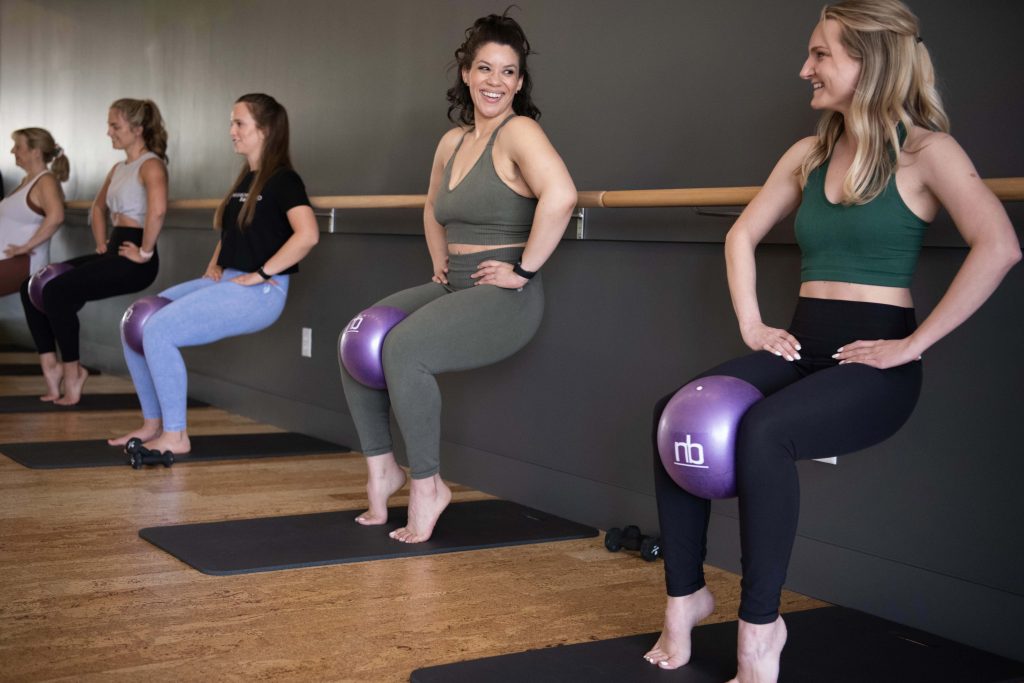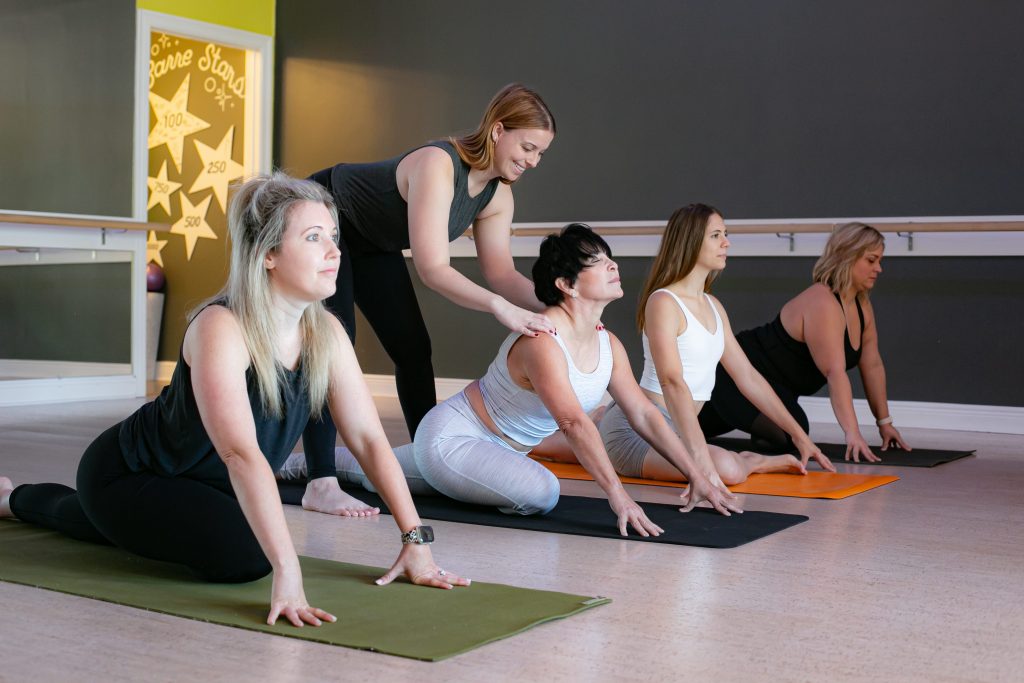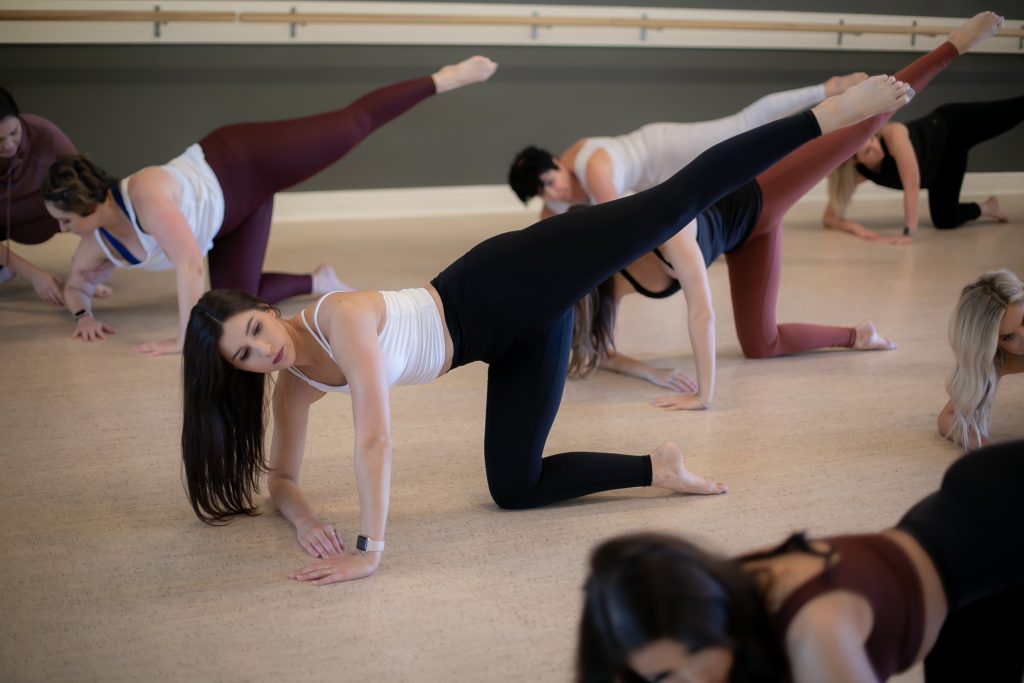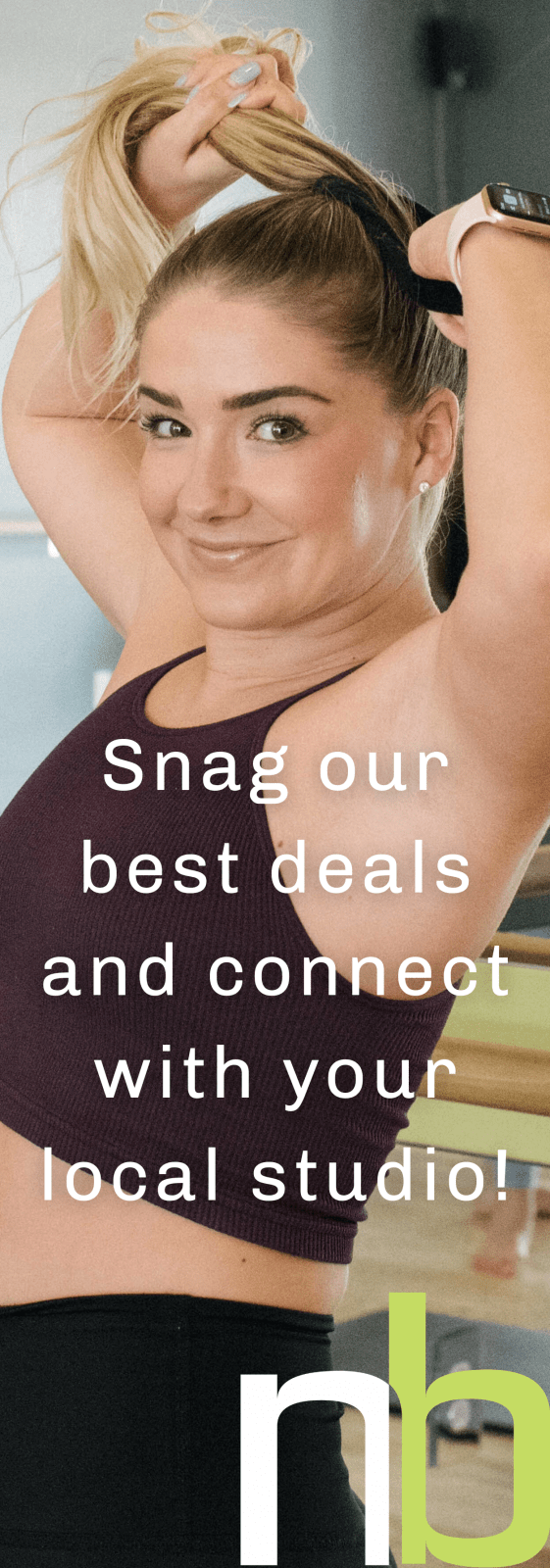Barre vs. Pilates vs. Yoga: Which Method is Right for Me?

What’s the difference of each method?
- Barre: Barre workouts are inspired by ballet training and combine elements of ballet, dance conditioning, and strength training. They typically involve performing exercises at a ballet barre or on the mat. Traditionally barre workouts focus on small, isometric movements that target specific muscle groups. They often incorporate props like small hand weights, resistance bands, and exercise balls. Barre classes aim to tone and sculpt the body, particularly the core, arms, thighs, and glutes. The exercises are usually low-impact and emphasize maintaining proper alignment and posture.
- Pilates: Pilates is a system of exercises developed by Joseph Pilates. It focuses on improving core strength, stability, flexibility, and body awareness. Pilates exercises involve controlled and precise movements that engage the deep core muscles. The practice emphasizes proper alignment, breathing, and concentration. Pilates workouts can be done on a mat or using specialized equipment like the reformer. The exercises typically target the core, but they also work on strengthening and lengthening other muscle groups.
- Yoga: Yoga is an ancient practice that encompasses physical postures, breathing exercises, meditation, and relaxation techniques. It has various styles, such as Hatha, Vinyasa, and Kundalini, each with its own emphasis and approach. Yoga classes focus on enhancing strength, flexibility, balance, and mindfulness. Postures (asanas) are performed to promote physical and mental well-being. Yoga often involves flowing movements, holding poses, deep stretching, and conscious breathing. Yoga can place a significant emphasis on mindfulness and spiritual aspects.
How many calories will you burn with each method?
The number of calories burned during barre, Pilates, and yoga can vary depending on factors such as your body weight, intensity of the workout, duration of the session, and your individual fitness level.
- At NEIGHBORHOOD barre, we offer a variety of class formats, ranging from low-impact to high-intensity, and each has its own cardiovascular element ranging from low to high. For a woman weighing around 150 lbs, you can expect to burn anywhere from 350 – 700 calories per hour. Barre30 would be our shortest class that focuses on low-impact strength training, while barreHIIT includes optional cardio bursts and is interval-based strength training.
- Pilates classes also vary in formats, and can be low-impact, such as mat-based classes, or or higher intensity, such as reformer based classes. The LIT Method blog suggested that you burn anywhere from 250 calories to 500 calories depending on the class format and length.
- Just as with Pilates and barre, yoga can also vary substantially in not only class format and length, but also if the class is heated or non-heated, which can affect calorie burn. Vinmec.com suggested that a 60 minute yoga class can burn anywhere from 200 – 600 calories based on the aforementioned circumstances.

What’s the similarities of each method?
While barre, Pilates, and yoga are distinct forms of exercise, they do share some similarities in terms of their focus on strength, flexibility, and body awareness. Here are some ways in which these practices are similar:
- Mind-Body Connection: All three disciplines emphasize the mind-body connection, encouraging participants to be present and mindful during the exercises. They promote body awareness, proper alignment, and conscious breathing to enhance the overall experience and maximize the benefits of the practice.
- Core Strength: Barre, Pilates, and yoga all place emphasis on developing core strength. Core muscles, including the abdominals, back muscles, and pelvic floor, are engaged and strengthened through various exercises and poses. A strong core helps improve stability, posture, and overall body strength.
- Muscle Tone and Flexibility: Each practice incorporates movements and poses that target specific muscle groups, helping to tone and strengthen the body. They also promote flexibility through stretching and lengthening exercises, contributing to increased range of motion and improved posture.
- Low-Impact Nature: Barre, Pilates, and yoga are generally low-impact exercises that prioritize joint-friendly movements. They can be suitable for individuals of different fitness levels and those who may have limitations or prefer exercises with minimal stress on the joints.
- Modifications and Adaptability: All three practices offer modifications and variations to cater to different fitness levels and individual needs. Whether you’re a beginner or advanced practitioner, there are options to adjust the exercises to suit your abilities and progress at your own pace.
- Mindfulness and Stress Relief: Barre, Pilates, and yoga incorporate elements of relaxation, stress reduction, and mindfulness. These practices often include breathing techniques, meditation, or moments of stillness that promote mental well-being and help manage stress.
Which method is best during pregnancy?
It’s essential to prioritize safety, listen to your body, and make modifications as needed when expecting. Each woman’s pregnancy and postpartum journey is unique, so it’s important to consult with your physician and your studio instructor. All three workouts can be modified to accommodate the needs of pregnant or postpartum individuals.
- Barre workouts are a great way to stay active during pregnancy, and can also improve post-natal recovery. Barre helps to tone the body and improve posture, while also providing a low-impact workout that is gentle on the joints. This workout can also strengthen the muscles used during childbirth, which can make the process easier and less painful.
- Pilates enhances your overall fitness during pregnancy, and can also help to reduce back pain and improve your posture. Pilates can also be a good way to learn breathing control techniques, as breathing is a key focus in almost any Pilates class.
- Practicing prenatal yoga can help you develop a deeper understanding of the changes your body is going through during pregnancy. Prenatal yoga classes typically involve a series of gentle stretching exercises, breathing techniques, and relaxation techniques and are suitable for all levels of fitness.

Which method is right for me?
If your goal is to work on head-to-toe toning, muscular strength, and endurance, try barre classes. If your goal is to work on core strength, balance, and posture, try Pilates classes. If your goal is to work on flexibility, mindfulness, and breath, yoga will take a greater focus on this. All three are fairly low-impact activities, but yoga will typically be the lowest. The best approach to achieving your fitness goals is to try a class and find out how you like to move your body best.
It’s important to note that while there are similarities, each practice has its own unique characteristics, techniques, and objectives. One thing that we love about the NEIGHBORHOOD barre method is that elements of all three methods can be found under one roof: foundations of Pilates, ballet and dance-inspired conditioning, as well as yoga stretching and mobility are all incorporated into nb classes! Select nb studios even offer yoga-only classes, in addition to NEIGHBORHOOD barre class formats such as barre30, barre50, barreHIIT and barreSTRENGTH. New clients can try out all of these classes to gain a more comprehensive understanding of each class’ specific benefits and appeal. Contact your local studio here to learn more about introductory offers for new clients and summer specials for all!


